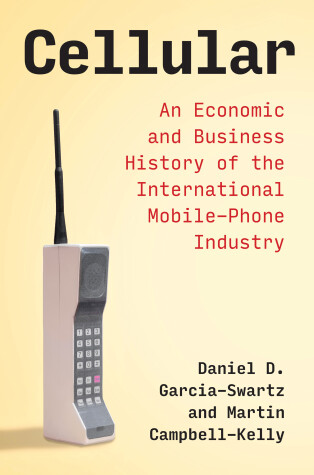History of Computing
2 total works
A business history of the software industry from the days of custom programming to the age of mass-market software and video games.
From its first glimmerings in the 1950s, the software industry has evolved to become the fourth largest industrial sector of the US economy. Starting with a handful of software contractors who produced specialized programs for the few existing machines, the industry grew to include producers of corporate software packages and then makers of mass-market products and recreational software. This book tells the story of each of these types of firm, focusing on the products they developed, the business models they followed, and the markets they served. By describing the breadth of this industry, Martin Campbell-Kelly corrects the popular misconception that one firm is at the center of the software universe. He also tells the story of lucrative software products such as IBM's CICS and SAP's R/3, which, though little known to the general public, lie at the heart of today's information infrastructure.With its wealth of industry data and its thoughtful judgments, this book will become a starting point for all future investigations of this fundamental component of computer history.
The development of the mobile-phone industry into what we know today required remarkable cooperation between companies, governments, and industrial sectors. Companies developing cellular infrastructure, cellular devices, cellular network services, and eventually software and mobile semiconductors had to cooperate, not simply compete, with each other. In this global history of the mobile-phone industry, Daniel D. Garcia-Swartz and Martin Campbell-Kelly examine its development in the United States, Europe, Japan, and several emerging economies, including China and India. They present the evolution of mobile phones from the perspective of vendors of telephone equipment and network operators, users whose lives have been transformed by mobile phones, and governments that have fostered specific mobile-phone standards. Cellular covers the technical aspects of the cellphone, as well as its social and political impact.
Beginning with the 1980s, the authors trace the development of closed (proprietary) and open (available to all) cellular standards, the impact of network effects as cellular adoption increased, major technological changes affecting mobile phone hardware, and the role of national governments in shaping the industry. The authors also consider the changing roles that cellular phones have played in the everyday lives of people around the world and the implications 5G technology may have for the future. Finally, they offer statistics on how quickly the cellular industry grew in different regions of the world and how firms competed in those various markets.
Cellular is published in the History of Computing Series. This distinguished series has played a major role in defining scholarship in the history of computing. Hallmarks of the series are its technical detail and interpretation of primary source materials.

